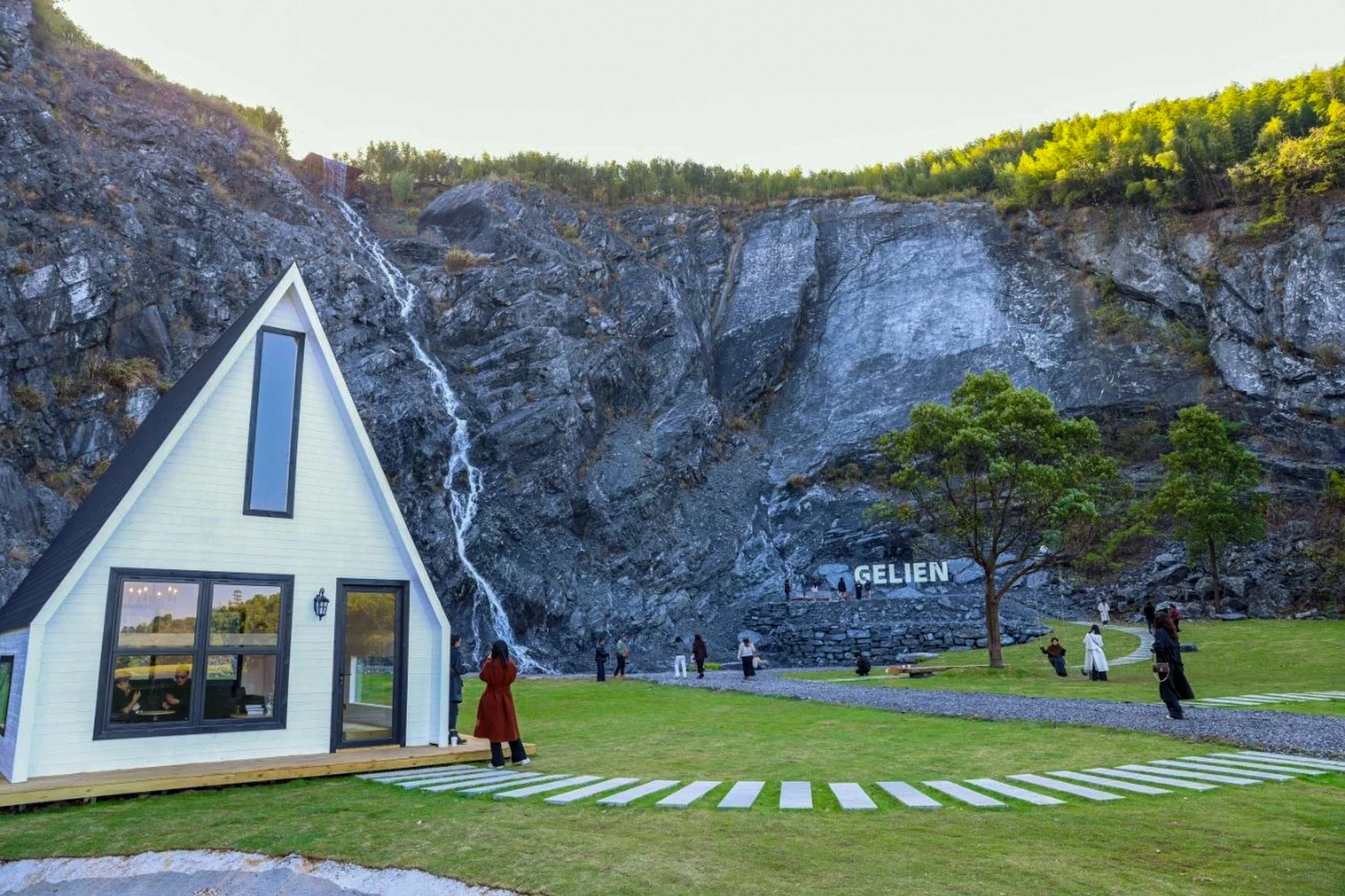By June Xia
She seldom visits the same suburban cafe twice. Asa Jin has her cuppa, takes in the view, snaps her share of pictures for social, and then considers which among the rising number of coffee shops she will visit next.
“Most rural cafes are leaning into a trendy, influencer-driven vibe, but it’s not sustainable,” said the 37-year-old freelancer from Hangzhou, Zhejiang province, explaining that many shops try to lure customers with “unique natural settings” – perfect for coffee-sipping social media users like herself.
“But after one visit, the sense of novelty has already faded,” she said.
Fortunately for Asa, there is probably another cafe just around the corner. Or closer, in many cases.
While tea has long been the drink of choice for Chinese people, a coffee culture has boomed and is now spreading to the countryside. Citing customs data, Xinhua said: “China’s net coffee imports increased by 130,800 tonnes from 2020-2024, representing 6.53-fold growth, with an average annual compound growth rate of 65.7 per cent.”
China now has 300-billion-yuan (US$42 billion) coffee industry, and consumption is expected to rise by double-digits again this year, according to the Ministry of Agricultural and Rural Affairs.
Dubbed “rural cafes”, coffee shops in suburban areas are viewed as a means of “rural revitalisation” for the way they create jobs and drive up the local economy, helping offset urban-rural disparities.
For example, Deep Blue, a cafe in Anji county, Zhejiang, operates on a “two investments, three returns” model, where villagers receive dividends from shares, rental income and wages at the cafe after lending their land to the cafe operator or working there.
The growth rate of cafes far exceeds that of coffee demand, which will inevitably squeeze the profit margins of the rural cafe industry
Li Bin, economics professor
Its success has led to a cafe craze – Anji boasts more than 300 cafes now. And with a population of about 600,000 people, the county reportedly has a greater density of cafes than Shanghai, whose population is 40 times larger.
Across the country, there are more than 40,000 coffee shops opening in suburban areas, according to state media reports citing national statistics. Yunnan in the southwest and Guangdong in the south lead the provincial rankings, Xinhua said.
The abundance of cafes is helping to manifest oft-repeated revitalisation plans by President Xi Jinping: “Rural revitalisation in the new era requires the development of speciality agricultural products and rural tourism, developing tourism tailored to local conditions.”
However, even as the coffee scene gains notoriety, challenges are emerging as saturation sets in.
“Although demand for coffee will continue to grow, the growth rate of cafes far exceeds that of coffee demand, which will inevitably squeeze the profit margins of the rural cafe industry,” warned Professor Li Bin of the School of Economics at the Central University of Finance and Economics.
To stand out from the competitive pack, many rural cafes are wrangling with how to strike a balance between offering quality coffee products, turning a profit, and catering to customers who are looking for a bit of variety – or perhaps a brief escape from the hustle and bustle of the urban grind.
In Deping county, not far from Anji, Gelien Coffee is the top-rated local cafe on Chinese lifestyle platform Dianping, often described as a combination of Yelp and TripAdvisor.
Gelien gained social media buzz for the surrounding man-made area that is known for its picturesque landscapes and charm reminiscent of parts of Switzerland.
In contrast, nearly 30 per cent of the reviews were negative or mediocre. Common complaints included: “bad-tasting coffee”, “only good for photos”, “instant-coffee quality”. The shop owner declined to reply to a pair of requests for comment.
“Whether a shop can turn ‘checkout’ customers into regular customers is the standard of measuring its success,” said Zhou Haojie, a 49-year-old coffee brewer who honed his skills with help from the RedNote social media platform.
In May, he took a gamble – closing down his restaurant in a Deping county and opening up a cafe out of his home in Guozhao village.
Guozhao has been engaged in a provincial campaign aimed at transforming villages and promoting better integration between urban and rural development. Dubbed a “Thousand Villages Demonstration, Ten Thousand Villages Renovation”, the project is considered part of China’s broader rural-revitalisation strategy.
Since last year, the village’s development has included modernised roads and improved infrastructure, making it more easily accessible to outsiders, a burgeoning sightseeing destination, and perhaps more appealing to urban residents who might consider a rural relocation.
Zhou is now hoping that local promotional videos will help spread the word of cafes like his, rather than merely highlighting the most well-known and popular ones.
But as more villages try similar tactics to pull in tourists and urbanites, the risk of homogenisation has reared its head.
According to state media, 98 per cent of rural cafes in Zhejiang province choose to include “natural settings” in their shop designs. And a search for “cafes” on Rednotes’ data tracker showed that “sense of atmosphere” was among the top-ranked terms.
“The development of rural cultural and tourism industries has reached a bottleneck period,” Professor Li said. “Homogenised business models and insufficient rural culture and other resources are limiting their sustained expansion.
“The government’s cultural and tourism policies should be based on a friendly business environment, utilising culture to create in-depth, differentiated development models to help boost local rural economies.”
